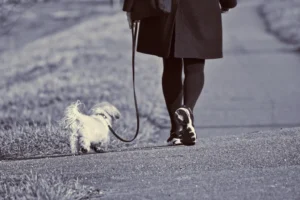Cats can be finicky eaters, often leaving their food untouched once they see the bottom of the bowl. But why do they stop eating in this situation? Let’s explore the reasons behind this common behavior.
Have you ever noticed your cat taking one look at the bottom of their food bowl and walking away, leaving behind a seemingly untouched meal? This behavior might leave you puzzled and wondering what exactly is going on in your cat’s mind when they do this.
1. The Instinctual Behavior of Cats
Cats have a strong instinctual behavior that stems from their history as hunters. When a cat sees the bottom of the bowl, it may trigger their natural instinct to ration food and save some for later. In the wild, cats would hunt for their prey and not always be successful in catching food every day. Therefore, they have adapted to conserve their energy and food when necessary. So, when your cat stops eating at the bottom of the bowl, it’s simply following its instinct to save some food for later, just in case.
2. Preference for Fresh Food
Cats are known for their preference for fresh food, and they can be quite picky when it comes to their meals. When a cat sees the bottom of the bowl, it may be a sign that the food has been sitting out for too long and is no longer appealing to them. Cats rely on their keen sense of smell to determine if food is fresh or not, and they may turn their nose up at anything that doesn’t meet their standards. To ensure your cat continues to eat well, try serving smaller portions of food more frequently throughout the day rather than leaving a large amount out at once. This will help keep the food fresh and appetizing for your feline friend.
Bonus Tip: Consider investing in an automatic feeder that dispenses small amounts of food at different times of the day. This can help mimic the natural grazing behavior of cats and keep their food fresh and appealing for longer periods.
Remember, understanding your cat’s behavior and preferences is key to keeping them happy and healthy. By catering to their instinctual needs and providing fresh, appealing food, you can ensure that your feline companion will stay well-fed and content.
Sensitivity to Smells
Cats have a remarkable sense of smell, which can greatly influence their eating behavior. When they see the bottom of their bowl, it may not just be about the physical empty space, but also about the lack of enticing aroma. Cats are known to be picky eaters and may refuse to eat if the food doesn’t smell appealing to them. As food sits out, it can lose its aroma, and once it reaches the bottom of the bowl, it may no longer be stimulating enough for your furry friend’s taste buds.
Food Location and Safety Concerns
The location of your cat’s food bowl plays a crucial role in their eating habits. If the bowl is placed in a high-traffic area or near loud noises, your cat may feel stressed or anxious while eating, causing them to stop once they see the bottom of the bowl. Similarly, if there are other animals around or if your cat feels unsafe in the feeding area, they may choose to walk away from their food. Creating a quiet, safe space for your cat to eat can help prevent them from stopping mid-meal.
Additional Insight: External Link
For more tips on creating a stress-free feeding environment for your cat, check out this helpful resource from the American Association of Feline Practitioners: Creating a Feline-Friendly Feeding Environment
5. Behavioral Changes and Stress
When it comes to cats stopping eating when they see the bottom of the bowl, it’s essential to consider their behavioral changes and stress levels. Cats are creatures of habit and can be sensitive to changes in their environment. If your feline friend suddenly stops eating, it could be due to stress triggered by something new or different in their surroundings. This stress may manifest in changes in their eating patterns, leading them to walk away from their food bowl even when there’s still food left.
To help your cat feel more at ease and regain their appetite, try to identify and address any recent changes that might be causing them stress. Whether it’s a new pet in the household, a change in their feeding routine, or even loud noises that disrupt their mealtime, addressing these stressors can help your cat feel more comfortable and willing to eat. Making their eating area a quiet, peaceful space and maintaining a consistent feeding schedule can also help alleviate their stress and encourage them to finish their meals.
6. Health Issues and Appetite Changes
If your cat consistently stops eating when they see the bottom of the bowl, it could be a sign of underlying health issues affecting their appetite. Cats can experience various health problems that may lead to a decrease in their food intake, such as dental issues, gastrointestinal problems, or infections. These health issues can make eating uncomfortable or painful for your cat, causing them to leave food behind even when they’re hungry.
It’s crucial to monitor your cat’s eating habits closely and consult with a veterinarian if you notice persistent changes in their appetite. A thorough physical examination and possible diagnostic tests can help identify any underlying health issues that may be impacting their eating. Whether it’s a dental cleaning, dietary adjustments, or medical treatment, addressing these health issues promptly can help improve your cat’s appetite and overall well-being.
Extra tip: Providing wet food or mixing in some water with your cat’s dry food can help increase their hydration levels, especially important for cats prone to urinary issues. This can also make the food more palatable and enticing for cats who have lost their appetite.
Strategies to Encourage Eating
As cats can be picky eaters, it’s essential to keep them interested in their food. One effective strategy is to mix in a small amount of wet food with their dry kibble to add moisture and enhance the flavor. Additionally, rotating between different types of food can prevent boredom and entice your cat to eat more consistently.
Another helpful tip is to feed your cat in smaller, more frequent meals throughout the day. This approach mimics their natural hunting behavior and can prevent them from becoming disinterested once they see the bottom of the bowl. Finally, try using puzzle feeders or interactive toys that dispense small amounts of food as your cat plays. This not only stimulates their mind but also encourages them to eat gradually instead of rushing through their meal.
Remember, every cat is unique, so it may require some experimentation to find the right combination of food and feeding routine that works best for your furry friend.
Interesting Fact: Cats have taste buds for both sweetness and bitterness, but they have a limited ability to taste sweetness compared to humans.
Did you know that cats are obligate carnivores, meaning they require a diet high in animal protein to thrive? This preference for meat influences their taste preferences, as sweetness is not a primary flavor cats seek out in their food. While cats can detect sweetness to some extent, their taste buds are more attuned to savory flavors like those found in meat.
Understanding your cat’s taste preferences can help you choose the right food options to keep them engaged and satisfied during meal times. Consider opting for protein-rich foods that align with their natural diet to ensure they’re getting the nutrients they need to stay healthy and happy.
Alex, a passionate animal lover, has experience in training and understanding animal behavior. As a proud pet parent to two dogs and three cats, he founded AnimalReport.net to share insights from animal experts and expand his knowledge of the animal kingdom.









